The Amazon is probably ‘the rainforest’ that springs to people’s minds all across the planet. It is a world on its own, with lush green canopies, winding rivers, and incredible sounds of nature that echo throughout its dense forest.
The Amazon rainforest is also crucial for keeping the climate in balance and our planet healthy. Besides, this green powerhouse holds many fascinating mysteries. There is still so much we don’t know about the Amazon, which makes it one of the most intriguing places on Earth.
Below are 10 interesting Amazon rainforest facts that underscore why we should protect it for the future of our planet.
The Amazon is the largest tropical forest on Earth
The Amazon in South America is the largest tropical forest in the world, spanning over 6.7 million square kilometres. To put its sheer size in perspective, it is twice the size of India – the largest country in South Asia.
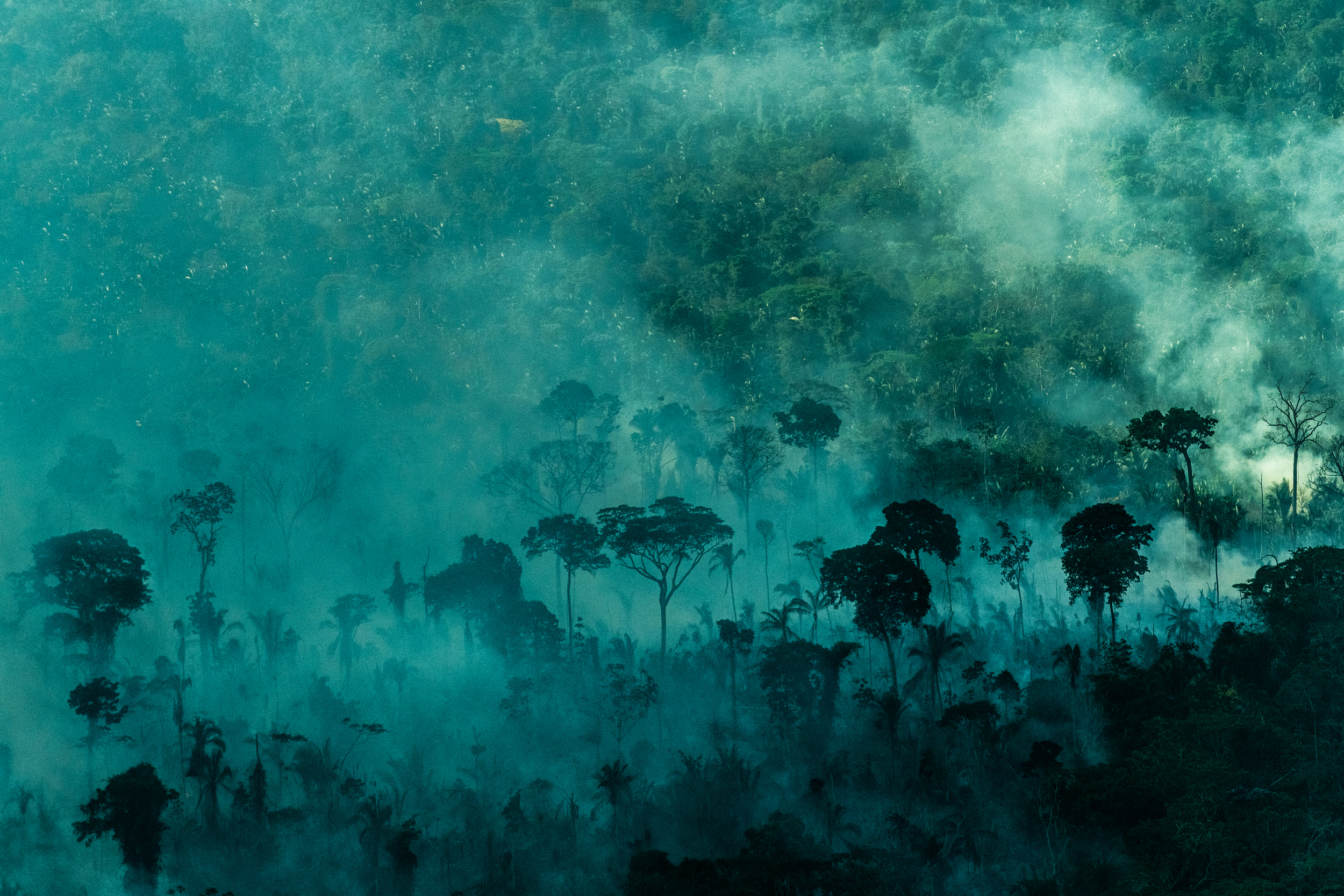
Smoke drifts between trees in the Amazon rainforest. This mix of beauty and destruction is a defining scene of the Amazon in the 21st century. © Fábio Nascimento / Greenpeace
It is often described as the ‘lungs of our planet’. But this is partly a myth. While it is true that the rainforest absorbs carbon dioxide and releases oxygen, the trees use up most of the oxygen they produce during the photosynthesis process. The Amazon actually contributes very little to the total production of oxygen in the atmosphere.
It covers around 40% of the landmass of South America
The Amazon rainforest takes up about 40% of the landmass of South America. It stretches across eight countries and one overseas territory on the continent. Brazil contains the most of the rainforest – around 60%. Other countries include Peru, Colombia, Bolivia, Venezuela, Guyana, Ecuador, Suriname and French Guiana.
This makes it a unique challenge to protect one of the most valuable ecosystems on the planet. But it also highlights why these countries (and the wider world) need to cooperate to protect and preserve the Amazon across borders.
The Amazon is one of the most important carbon ‘reserves’ on the planet
Tropical forests, such as the Amazon, store an astonishing amount of carbon in their tree trunks, stems, leaves, roots and soil. It is estimated that the Amazon rainforest holds around 123 billion metric tonnes of carbon above and below ground , more than 12 times the total emissions from the world’s energy system. This makes it one of the most important ‘carbon reserves’ on the planet.
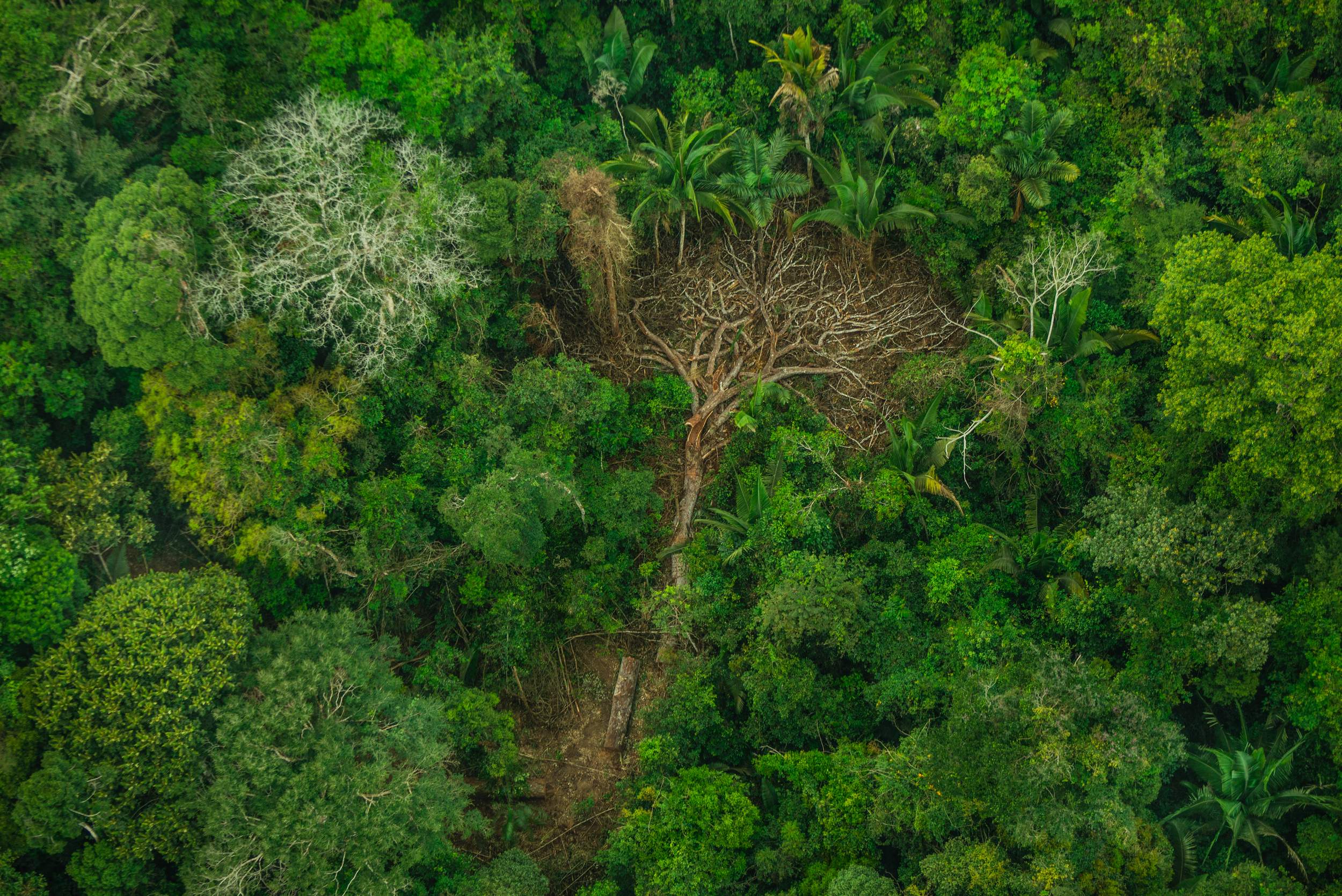
The destruction of the rainforest is a huge threat to the existence of the Karipuna indigenous people, since the forest is a life giving force for the community.
The Karipuna Indigenous Land has been rapidly destroyed by the ostensive invasion of loggers and grileiros (land grabbers). © Christian Braga / Greenpeace
But there are indications that the Brazilian Amazon is releasing more CO2 than it absorbs because of deforestation. Even though fewer trees were cut in 2023, the rainforest in Brazil still faces many threats, like clearing land for cattle ranching. This is of concern because the Amazon rainforest is still one of our biggest allies in our fight against climate change.
It is one of the most biodiverse places on Earth
The Amazon rainforest is home to a rich variety of animals and plants-many of which are found nowhere else on Earth. It contains over 10% of the known species on the planet. This means that one in every ten species lives here, making it one of the most biodiverse places on Earth. From Hyacinth macaws and harpy eagles to fearless jaguars and pink dolphins, this vibrant ecosystem is a treasure trove of life.
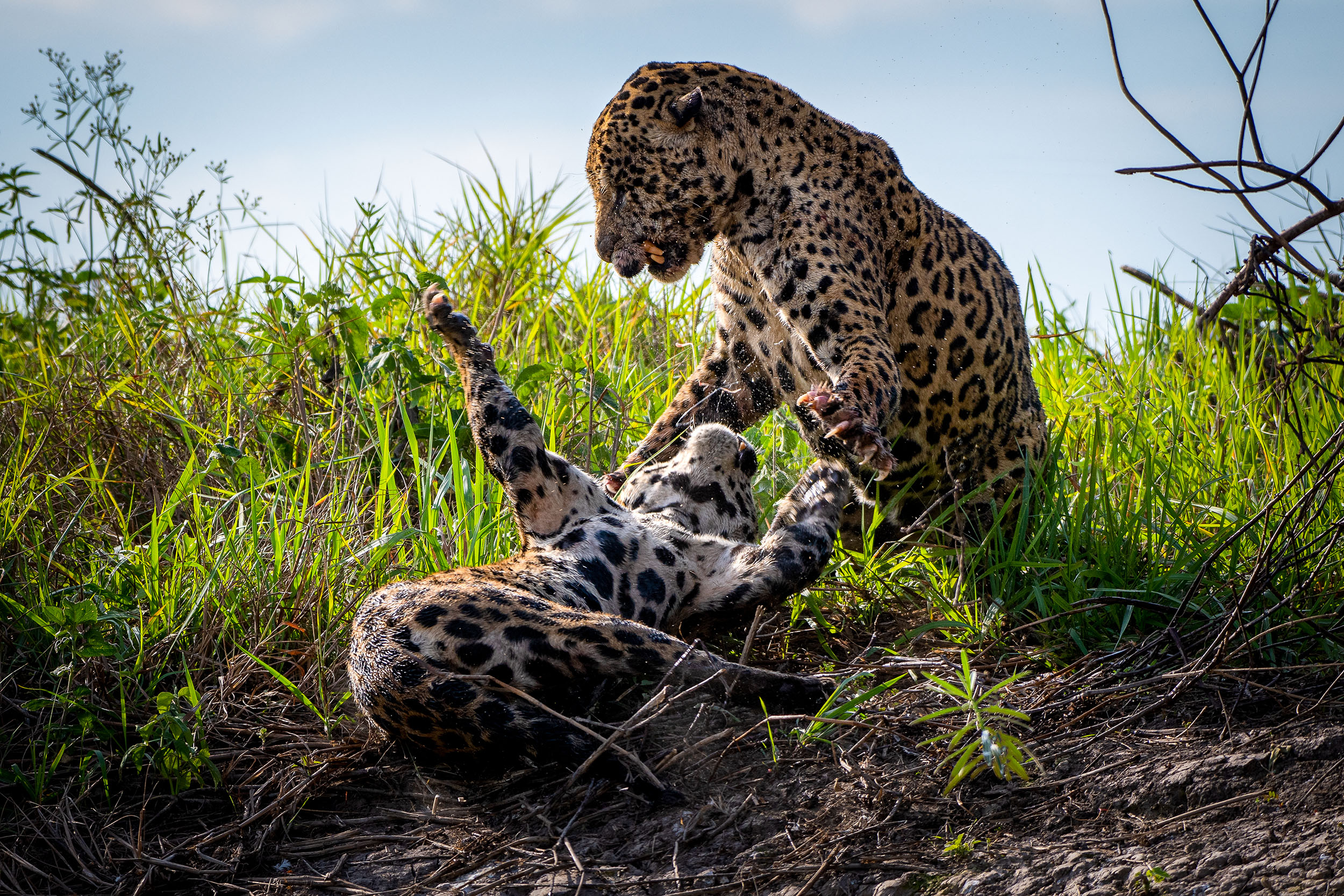
Jaguars play together in the Amazon, their habitat is increasingly under threat from rampant deforestation for industrial meat.
Not only this, but scientists are discovering new species every year. For example, more than 10,000 types of beetles have been discovered in the Western Amazon over the past 10 years. As more rainforest disappears, there is a real risk of not knowing what we are losing. This would be a major loss since the Amazon has immense potential for scientific and medical discovery and innovation.
The River Amazon is the second longest river in the world
Meandering through the heart of the rainforest is the Amazon River. It is the second longest river in the world, only surpassed by the River Nile in Africa. Measuring over 6,400 kilometres long, the Amazon River winds its way through dense vegetation and diverse landscapes. It serves as the lifeline of the rainforest by providing fresh water and nutrients to many species and human communities.
The Amazon basin is the huge area covered by the Amazon River and its tributaries (the smaller rivers that drain into it). Water levels in the basin rise and fall with the seasons, creating diverse wetland habitats, like swamps, marshes and floodplains. Different wetland habitats also support different types of wildlife, contributing to the region’s biodiversity.
The Amazon is home to millions of people, including over two million Indigenous people
The Amazon rainforest is more than just a collection of trees and animal species. It also supports millions of people, including over 2 million Indigenous people.
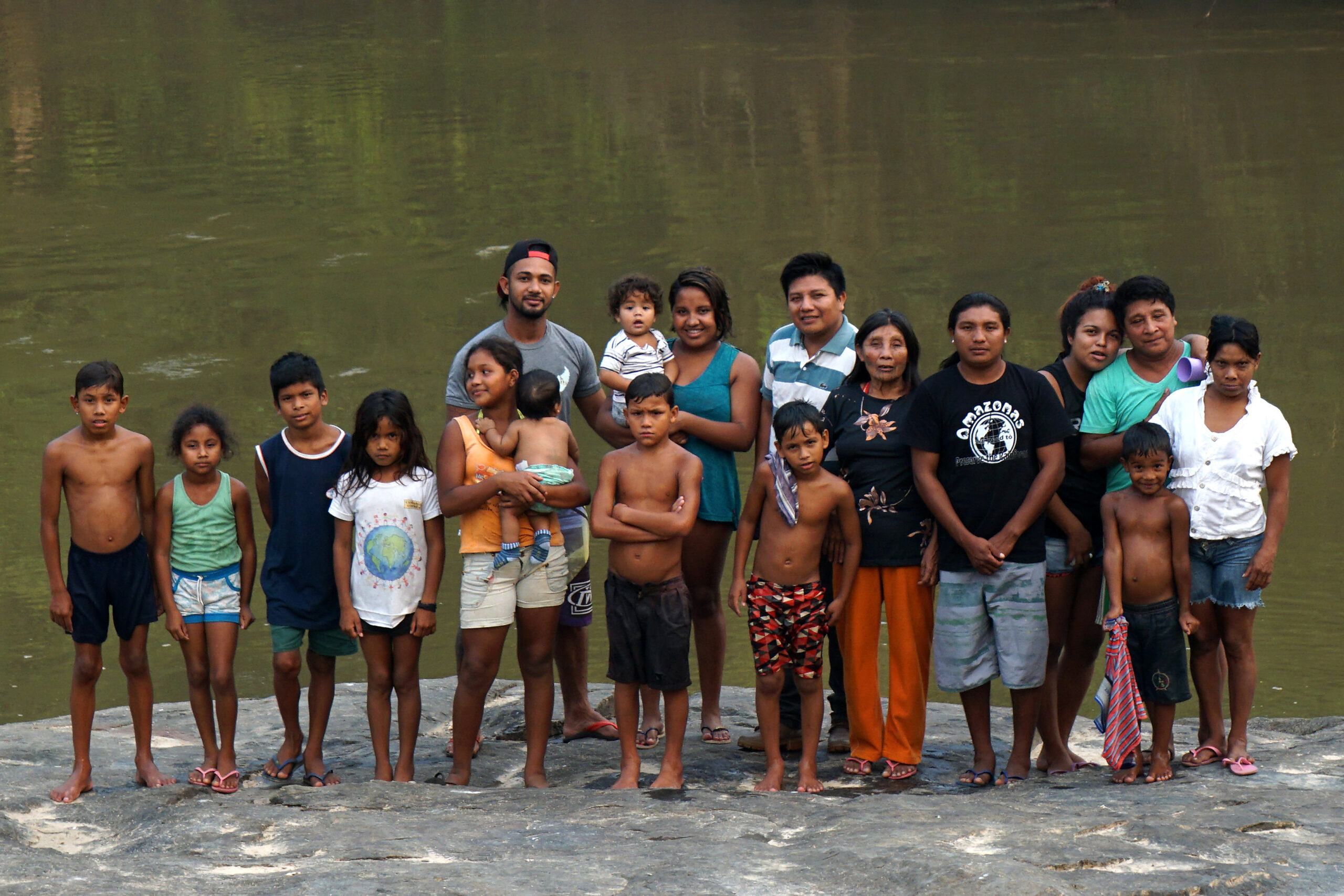
Members of the Karipuna people at Panorama Village, where the small community of the Karipuna indigenous people live, on the Jaci Paraná River. © Rogério Assis / Greenpeace
These communities have lived in harmony with the rainforest for thousands of years. They have cultivated a deep understanding and respect for their ancestral lands. They have been its protectors/guardians for generations. Each Indigenous People also has its own history, language and dialect. This all adds to cultural diversity and our deep understanding of human ecology.
But they are on the frontlines of our current climate crisis
Indigenous Peoples have a deep connection with their ancestral lands. From forecasting weather patterns to responding to environmental changes, they have been able to adapt their way of life. But this is changing. They are having to deal with more extreme weather events, such as floods, droughts and wildfires. Growing food has also become a challenge due to unpredictable climates, like changes in rainfall and temperature patterns.
Globally, Indigenous communities often live in geographically high-risk areas that are quite vulnerable to the effects of climate change. From deserts, isolated or low-lying islands to high-altitude mountains and forests, and the Arctic. This is a pressing issue of climate justice because Indigenous groups have the least carbon footprint of all. But they are on the frontlines of the current climate crisis.
The rights of Indigenous people often come under threat
The Amazon faces threats from ever more extreme forms of oil and gas, mining and industrial-scale farming. These activities are often illegal. They also pose a major threat to wildlife, disrupting entire ecosystems like tropical forests or freshwater.
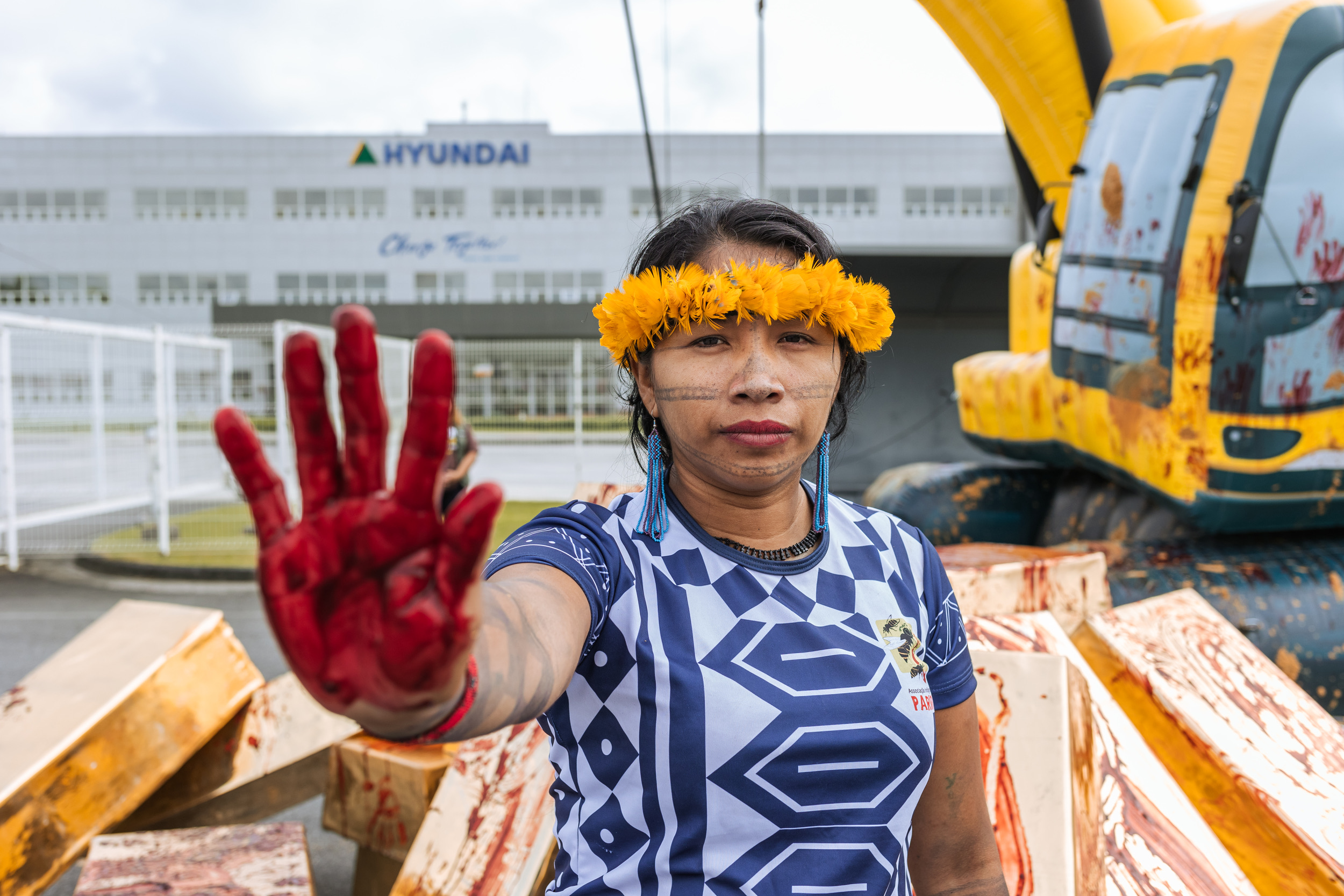
Greenpeace Brazil activists and Indigenous leaderships hold a peaceful action at the gates of a Hyundai plant in Itatiaia, Rio de Janeiro state. © Tuane Fernandes / Greenpeace
These human activities are also traumatic and devastating for Indigenous communities. From discrimination and violations of ancestral land rights to direct violence against individuals and communities, this is an issue of human rights as much as it is an environmental one. The killing of Indigenous land defenders is especially happening in Brazil. Since 2009, there have been more than 300 deaths related to land conflicts in the Brazilian Amazon.
The Amazon rainforest is getting smaller
The Amazon has been shrinking over the past few decades. In 2022, deforestation hit its highest levels since 2009. While this is showing a decline in 2023, we are seeing early warnings of the effects of deforestation in the region. Monsoons are starting later than usual. This has decreased the amount of rainfall over the Amazon. The dry season has also gotten longer over the past 40 years.
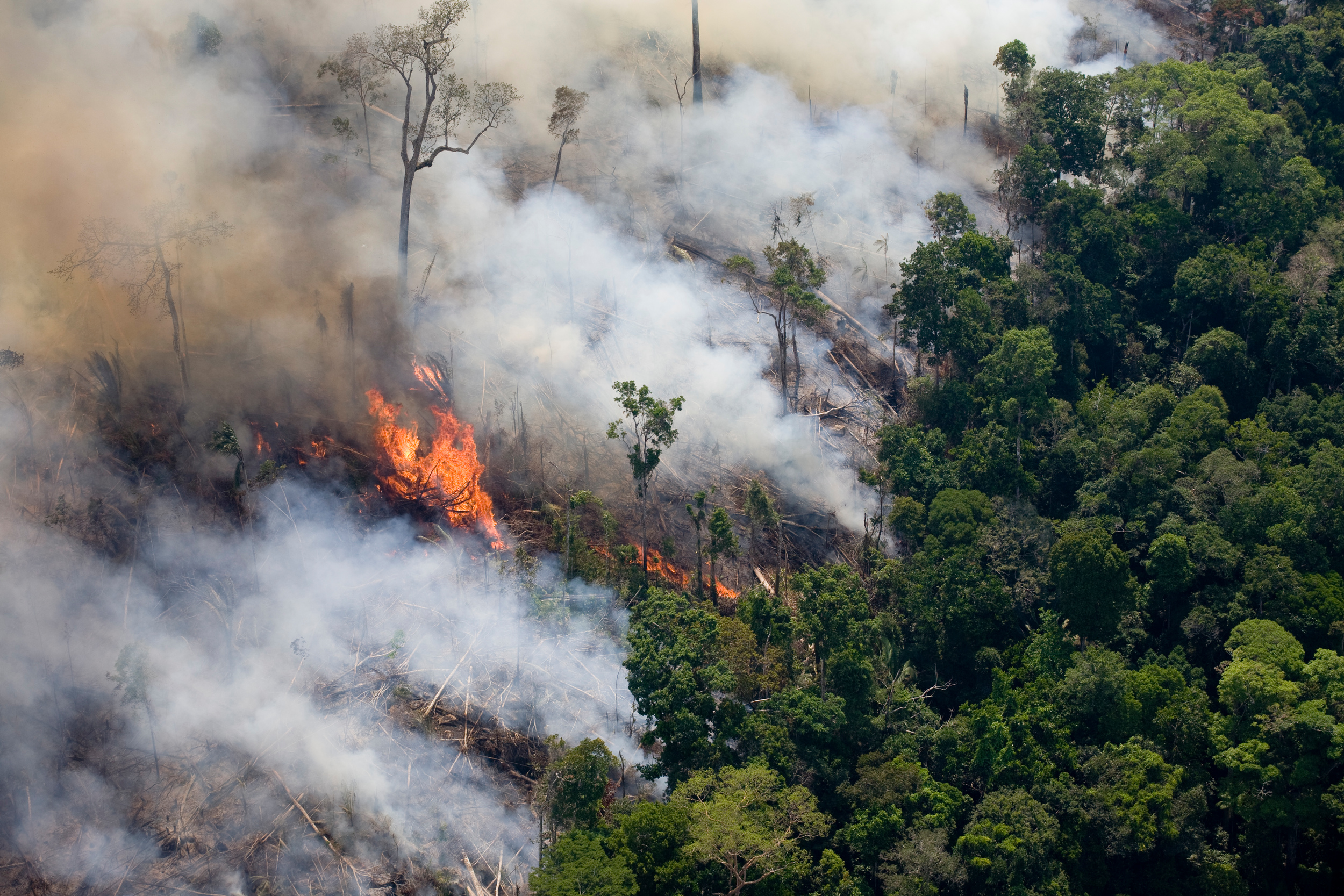
Man made forest fires to clear land for cattle and farming, near the BR 163 road and the Flona do Trairao (Trairao National Forest). West of Itaituba National Forest. © Greenpeace / Daniel Beltrá
As we continue to lose forests, we are in real danger of pushing the Amazon beyond its ‘tipping point’. This refers to a critical threshold, which when crossed can lead to dramatic changes and, often, a point of no return. The rainforest, as we know it, could gradually disappear as the dry season becomes more frequent and longer.
The Amazon rainforest is getting smaller. This threatens its incredible biodiversity and the livelihoods of millions of people that depend on it. It also threatens the future and health of our planet.
Cattle ranching for meat and dairy is the leading cause of deforestation in the Amazon
One of the major threats to the Amazon rainforest is deforestation. This is mostly driven by cattle ranching for meat and dairy production. Around 70% of deforestation has been linked to extensive cattle ranching. Growing soybeans and palm oil also contributes to the widespread clearing of forested areas throughout the region. The sobering fact is that the food we eat is linked to the destruction of the rainforest.
What can we do?
Governments, businesses and individuals all have a role to play in protecting the Amazon. We need to focus on large-scale solutions and system-wide changes. This includes protecting Indigenous people’s rights by pushing for environmental justice, conserving biodiversity in the region, and promoting sustainable agriculture and farming. As an individual, it can be helpful to learn about pressing issues such as biodiversity loss and the effects of climate change to inspire action.
